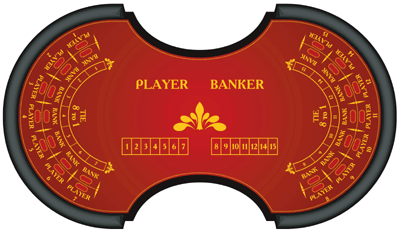How to Play Baccarat
Baccarat is mostly a game of chance, with a long and storied history. Brought to France around 1500, it was first a game reserved for nobility. Now available to everyone, it is still a game with an aura of affluence attached to it. Here we’ll be going over some rules and stratagems in more detail, so when you take your place at the Baccarat table, you can do so with confidence. It may also interest you to learn how the number of decks in the shoe can change the odds.

The Role of the Dealer
At the beginning of each game, a player is designated as the dealer. If a player does not want to deal, he passes the shoe to the next player. The deal changes at different points in the game depending on which variation is played. In Chemin de Fer, the banker switches when the banker loses. The next banker is the first person who steps up to wager the bank amount. If nobody does so, then it’s the person sitting to the right of the current dealer. In the Banque variation, the banker position is switched when all the cards in the show have been dealt. The Punto Banco variation is a bit simpler, and the croupier acts as the dealer instead of any of the players.
When to Draw the Third Card
If the player’s initial draw totals 5 or less, he draws another card. If a player draws a 6-7, he will stand. The rules for the banker are a little more complicated.
If a player draws a 6-7, the banker only takes into consideration his own hand. This means that if the banker draws a third card that means that he has less than 5 because he must stand if his cards are 6 or better.
If a player will draw a third card, then the banker acts accordingly:
Player draws a 2 – 3, the banker draws another if the banker’s hand is 4 or less, and stands if he has 5 or better.
Player draws a 4 – 5, the banker draws another if the banker’s hand is 5 or less, and stands if he has 6 or better.
Player draws a 6 – 7, the banker draws another if the banker’s hand is 6 or less, and stands if he has 7.
Player draws an 8, the banker draws if the banker’s hand is 2 or less, and stands if he has 3 or better.
Player draws a 9, 10, a face card, or an ace, then the banker will draw another card if his cards total 3 or less, and stands if his cards total 4 or better.
Banker, Player and Tie Bets
In Baccarat, a player can make one of three bets – on the Banker, the Player, or a Tie. Both the Banker and Player bets pay out at 1:1, but keep in mind that a win on a Banker bet incurs a 5% commission for the casino. The reason for this is the statistics show that over the course of a game, the Banker bet will win more often than a Player bet.
Although the Tie bet is perfectly legitimate and pays out at 8:1, it’s not often played or recommended. The odds of winning on a tie are a very low 9.5% (compared to 45.9% for a Dealer, and 44.6% for the Player bets), which translates to a staggering house edge of 14%. Betting on a Tie would be shooting yourself in the foot.